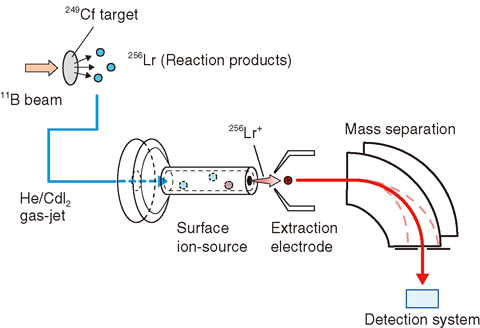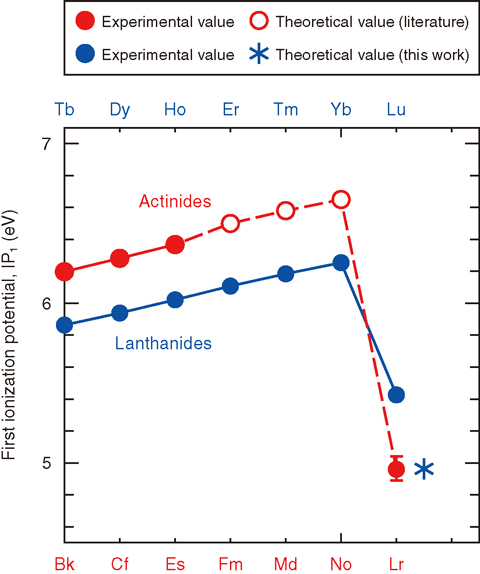
Fig.3-2 Schematic of the experimental set-up

Fig.3-3 The first ionization potential (IP1) of heavy lanthanides (![]() ) and actinides (
) and actinides (![]() ), including our present results for Lr
), including our present results for Lr
The periodic table shows the periodicity of the chemical properties of elements. In the heaviest element region, however, it is expected that chemical properties may differ from those extrapolated from lighter homologs.
Heavy elements (Z > 100) can be produced in nuclear reactions using an accelerator. Their chemical properties have not been sufficiently investigated because of their low production rates and short half-lives. The first ionization potential (IP1), one of the most fundamental physical and chemical properties of an element, gives direct information about the binding energy of an electron in the outermost electronic orbital of an atom. Accurate IP1 values for heavy elements provide crucial tests for our understanding of their electronic structure.
In this study, we measured the IP1 value of lawrencium (Lr, element 103) with a novel method we have developed based on the dependence of ionization efficiency on IP1 in the surface-ionization process wherein an atom is ionized via interaction with a solid surface at a high temperature.
The isotope 256Lr (half-life 27 s), produced in the reaction 249Cf(11B, 4n), was ionized on a tantalum surface at 2500 ℃. An ionization efficiency of 256Lr was determined by measuring the radioactivity of 256Lr after mass separation following the ionization (Fig.3-2). This work was performed at JAEA Tandem Accelerator Facility.
From the obtained ionization efficiency, we successfully evaluated the IP1 value of Lr to be 4.96 +0.08-0.07 eV for the first time. This IP1 value is the lowest one among those of all actinide elements and comparable to that of sodium (5.1391 eV), an alkali metal. Changes of the IP1 values of actinide and lanthanide elements with atomic number are shown in Fig.3-3. In the heavy lanthanide series, the IP1 value increases monotonically up to ytterbium (Yb) with the atomic number and then suddenly decrease at lutetium (Lu), the last lanthanide element. Our experimental result shows that Lr has the lowest IP1 like Lu. This indicates that Lr would be the last member of actinides.
A state-of-the-art theoretical calculation for Lr IP1 was also performed. The theoretical value is in pretty good agreement with the experimental one. This agreement strongly suggests that the electronic configuration of the Lr atom, which characterizes the chemical properties of Lr, would differ from that expected based on the periodic table.
The results of this study are expected to yield a better understanding of the chemical properties of actinide elements.